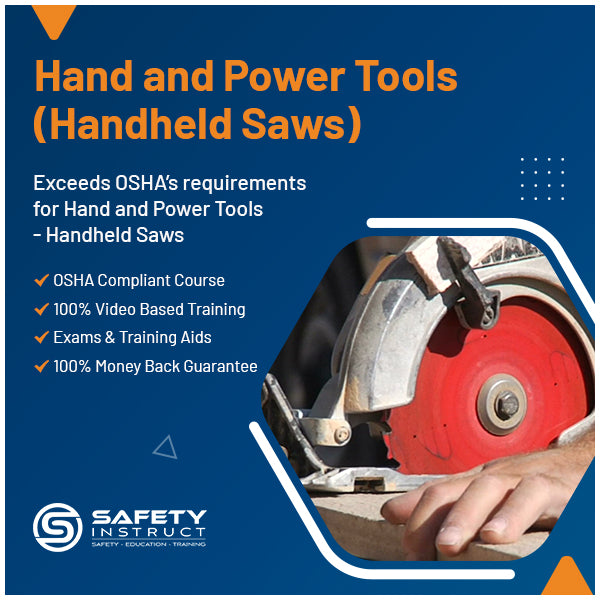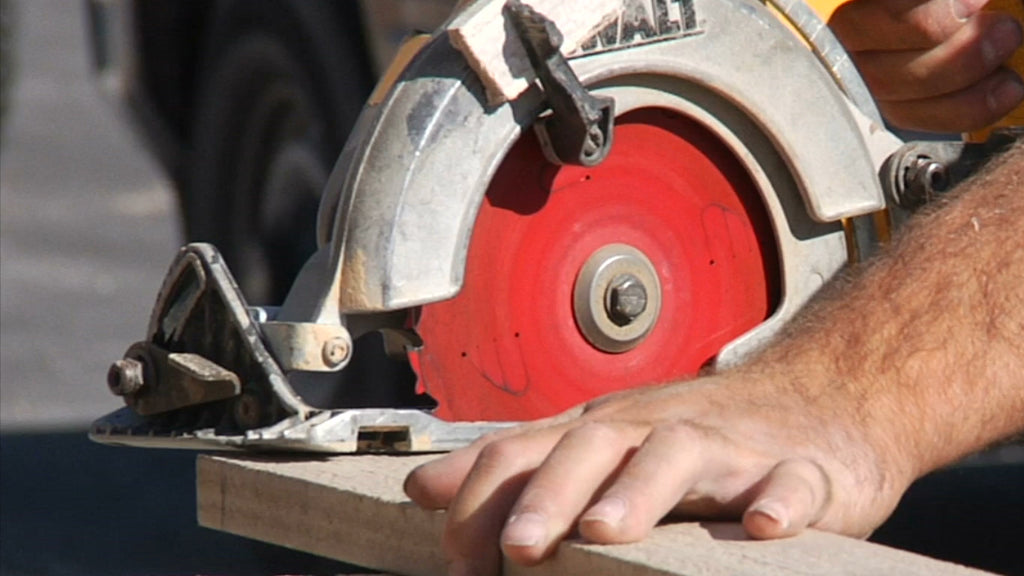No Products in the Cart
Click Here to Schedule a FREE Consultation
Phone: 866-943-6887 Email: sales@safetyinstruct.com



Handheld saws are one of the most common tools on workplaces today. Both their portability and power make them ideal choices for remote work areas. Unlike manual saws, these tools generate force from external power and are considerably more dangerous. However, when used correctly, they can be a huge time saver, letting you make cuts and adjustments quickly. This safety training course covers the following learning objectives: Circular Saws, Jig Saws, and Incident Prevention.
Circular Saws
Handheld circular saws are one of the most common tools on any sized construction site today. They are used for straight cuts either across or against the grain. Although powerful and handy, these saws can be dangerous. Before any operation with a handheld saw, the tool should be inspected, with the cord, guards and blade being checked, and the saw blade being cleaned of any sawdust or debris. It is also important to make sure the blade is the right type for the material being cut. Before cutting, double-check the material you plan to cut to be sure there are no nails or knots that might disengage the blade or cause it to kick back. While cutting, be aware of both your feet and your hands, as well as other coworkers who may be nearby.
Jig Saws
Handheld circular saws are one of the most common tools on any sized construction site today. They are used for straight cuts either across or against the grain. Although powerful and handy, these saws can be dangerous. Before any operation with a handheld saw, the tool should be inspected, with the cord, guards and blade being checked, and the saw blade being cleaned of any sawdust or debris. It is also important to make sure the blade is the right type for the material being cut. Before cutting, double-check the material you plan to cut to be sure there are no nails or knots that might disengage the blade or cause it to kick back. While cutting, be aware of both your feet and your hands, as well as other coworkers who may be nearby.
Incident Prevention
With any saw, the point of contact is the most dangerous area of operation. The teeth of the saw are moving fast. Accidents can happen quickly, and they can be very serious. One of the primary risks when using a handheld saw is a kickback. This is when the saw jams and gets stuck. Other risks come from flying particles and debris. If a saw does jam and cause a kickback, it is possible that teeth from he saw will also fly back and potentially hit the operator. To work safely you should always use personal protective equipment, including gloves, goggles and sometimes a respirator. Knowing the material you are cutting and how it behaves is also important for working safely.


